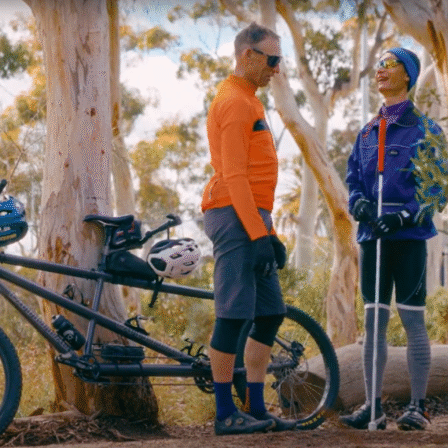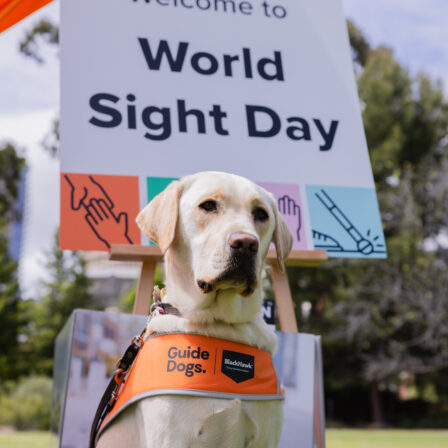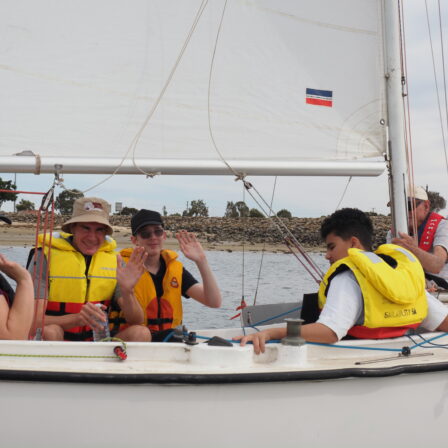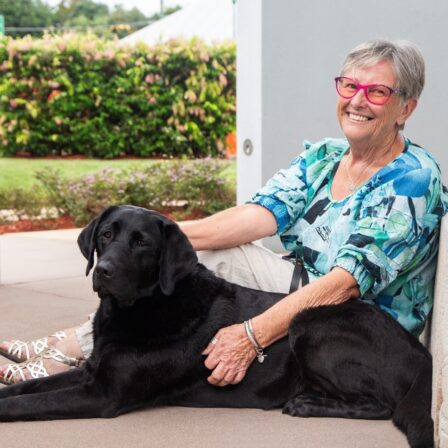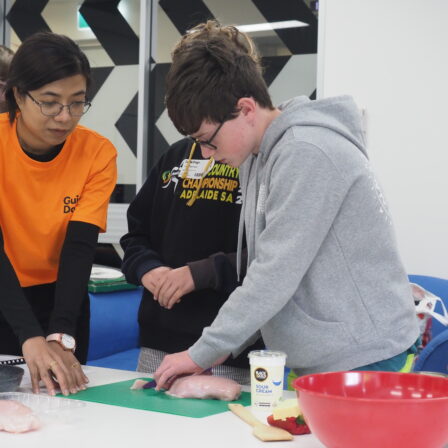News
Tech distracted Aussies regularly block the path of white cane users
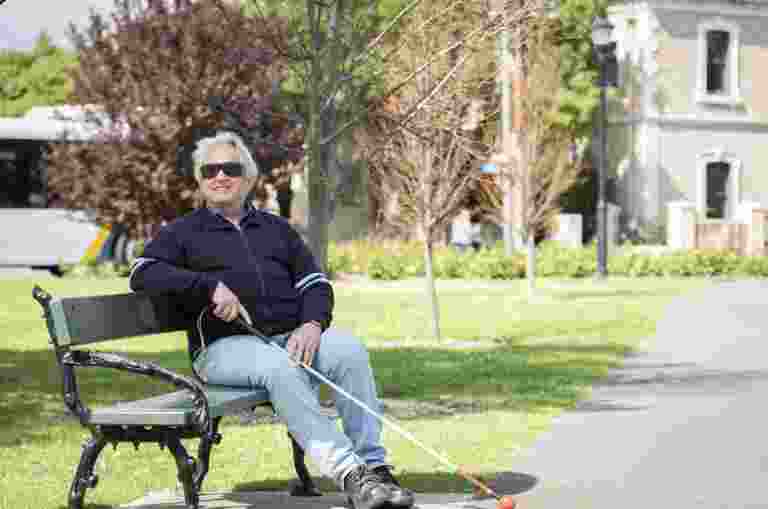
This International White Cane Day Guide Dogs Australia’s ‘Look up. Listen Up. Let me be.’ campaign is urging the public to be more aware of how they might be obstructing people with low vision or blindness, with the aim of making our streets safer and more accessible for all.
Crucially it asks that people look up from their phones and turn the volume down or off – as well as discouraging would-be helpers from grabbing white cane users, or their canes, without asking if they want help first.
A recent Client survey by Guide Dogs Australia ahead of International White Cane Day on October 15, shows that 3 in 4 cite people distracted by mobiles and headphones as the key cause of obstructions to their path of travel.
Following device distraction, around half of the respondents identified people riding bikes and scooters on pathways as one of the main ways they’ve been put in danger, with these incidents often leaving them feeling at risk of physical harm.
These high-speed instances could also contribute to around half of respondents saying they took no action when their path was obstructed. Around a third did address the incident directly with the person involved, but there’s clear room for the community at large to do more.
However, this should not take the form of physical intervention. Alarmingly, a third of Guide Dogs Australia Clients report having themselves or their cane touched or grabbed without being asked, with the majority requesting people just ask before offering assistance.
The most common impacts of these issues include increased anxiety while out, as well as feeling unsafe or even being put at risk of physical harm. This leaves members of the blind and low vision community feeling frustrated and annoyed by their experiences.
“Before I started receiving services from Guide Dogs I was scared to travel on my own. I was shy and wouldn’t ask people for help. My cane and travel training has really helped me to open up, build my confidence and break my isolation. Now I have more confidence and I go everywhere!
However, one of the main challenges I experience when out and is people with their heads in their mobile phones. It’s awkward if I bump into them with my cane. Also, it’s great when people ask do I need assistance, but if I say no, please let me keep on my way. By grabbing my arm or taking me off my known path, I can get distracted and disoriented and have to retrace my steps. ” Hannen Abdallah, Guide Dogs Client and white cane user.
Aaron Chia, CEO of Guide Dogs SA/NT said “It takes a high level of concentration to be able to navigate with a white cane, feeling for platforms, surfaces, textures and kerbsides as well as other obstacles. Our clients work really hard learning these skills and expertise to be able to get around their communities safely and independently. This ease of use then relies on the public. The ‘Look up. Listen Up. Let me be.’ campaign is a timely reminder that we must care for all those in our community, including those with additional accessibility requirements.”
This International White Cane Day we want to remind the community to be aware of how they might be obstructing people with low vision or blindness. We all have a role to play to ensure the safety of all members of our community.”
Level up your awareness game:
Paralympic Medallist and Guide Dogs Ambassador Jaryd Clifford shares his top tips for how to create a safer community for everyone:
- Look up from your mobile phone, device or whatever else might have your attention.
- Listen up, by lowering your earphone volume.
- Let them be. If you see a person with a white cane, be aware and give them space to navigate.
- Never grab or touch a person with a cane without their permission. Always ask the person first if they would like assistance and if so, how.
ABOUT INTERNATIONAL WHITE CANE DAY
International White Cane Day (IWCD), 15 October, is a day to celebrate the achievements of people with low vision or blindness and highlight the white cane as a life-changing symbol and tool of independence.
IWCD is always an important day on the Guide Dogs calendar – as the white cane is the mobility tool of choice for the majority of Guide Dogs Clients. Right now, the importance of the white cane as a visual signifier of low vision or blindness is more important than ever. It is a reminder to everyone to social distance so people with low vision or blindness can continue to move safely, confidently and independently through any environment.

